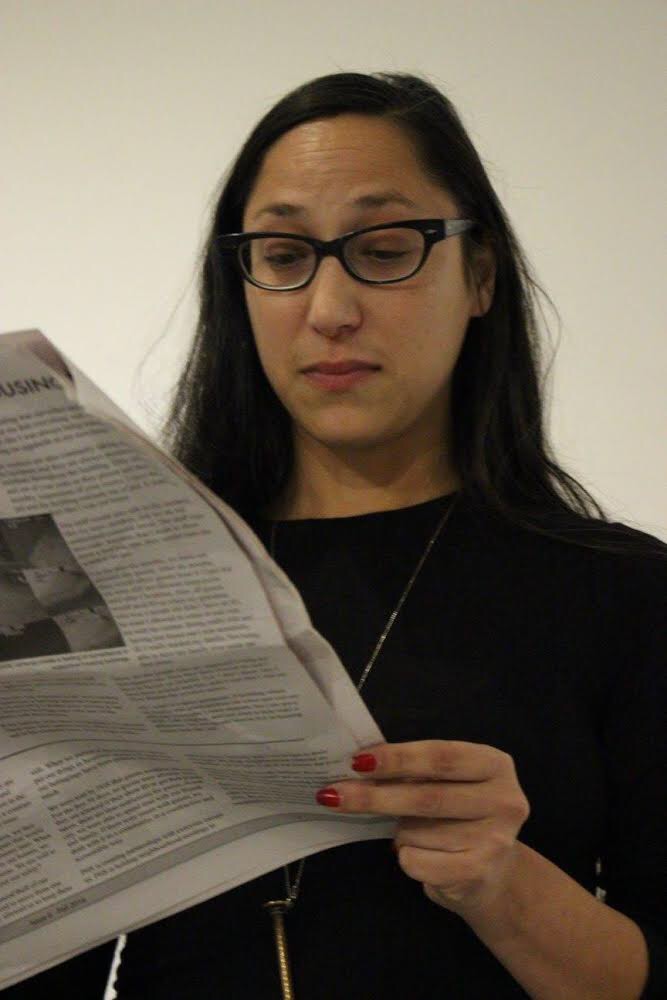The following dialogue between Mercedes Eng and Fred Moten is excerpted from the new edition of Eng’s Mercenary English, which documents – among many things – the resistance to the gentrification of Vancouver's Downtown Eastside, historically a working-class neighbourhood that includes many of the city’s historic and living communities of colour.
Hear Mercedes Eng read from her new book Prison Industrial Complex Explodes at the next ZUTIQUE reading with M. NourbeSe Philip and Cecily Nicholson. Event details here: https://www.facebook.
FRED MOTEN: So, by way of the afterword you wrote, “there goes the neighbourhood!”, I wonder where neighbourhoods go. Where does the neighbourhood go? And then it’s like how does the neighbourhood go in your poetry? Go, here, means live. How does the neighbourhood, this confluence of people and place, the place the people make in their living and in their collaborative and never individuated mattering, live/go (move) in your poetry?
MERCEDES ENG: I see the neighbourhood as the people, people who live in a particular place yes, and for some neighbourhood means location but to me a neighbourhood is the people in a specific geography that give that area its character. Now the neighbourhood (people) is being displaced by a new neighbourhood (people) occupying the physical space of the Downtown Eastside (DTES). How does the hood live in my poetry? “how it is,” a poem now in its tenth year, continues to record the violence in the DTES caused by racism and real-estate development. I have a duty, also I think, a right, to bear witness and document.
FM: This connection between right and duty is cool and seems absolute to me and follows from that sense of the neighbourhood being the people, you and your women holding each other up, the hard and brutal but also beautiful life of the neighbourhood that is given so amazingly in the “autocartography” section of Mercenary English, which intersperses “how it is,” which is like the neighbourhood’s constantly changing map, with poems that feel not just autobiographical in the strictly personal sense but something like an autobiography of the neighbourhood as it goes and is made to go. Whenever you use the word “I” it’s not just you and wherever you go the neighbourhood goes with you.
ME: This idea that the neighbourhood goes with me wherever I go reminded me of something I wrote about ten years ago, as I was theorizing my body as a space, as frontier, and as contact zone: My body is the frontier and the contact zone. It’s bruised, it’s scarred. In a physical sense I seem not to know where my body ends and the rest of the world begins. At work as a waitress, it is as if I fight the barrier of class physically. I war while I work, as if banging into the tables of these lawyers I serve will create a bigger space for working class/female/ not white me. In another sense my body was a contact zone, a frontier, as a vehicle of sex work. My clients came to the frontier of poor spatiality in two ways. The male interloper enters the physical geography of the Downtown Eastside, Canada’s poorest postal code, a space I’m allowed to be in because he needs me there to service him. Once the location becomes economically desirable, my space will disappear. Then he enters the physical geography, the body of the woman he rents, mine, which is not just what it is—a space to be neocolonized—because of where it is (the ghetto)—but also because her body, mine, is already written as a site of exploitation because it’s female, because it’s not white. Not that every girl on low track was not white. But so many of them were not. I no longer work the stroll. I don’t stand at Dunlevy and Hastings til the early morning picking up dates outside the funeral parlour where my grandparents were shown, I don’t pick up condoms and lube and the new bad date sheet as part of my routine anymore. But because it’s my body, because it’s where I live, I still carry the frontier, the contact zone, with me wherever I go.
 Mercedes Eng
Mercedes EngPhotos
Info
All Articles by theGODBERDinstitute
Tags



